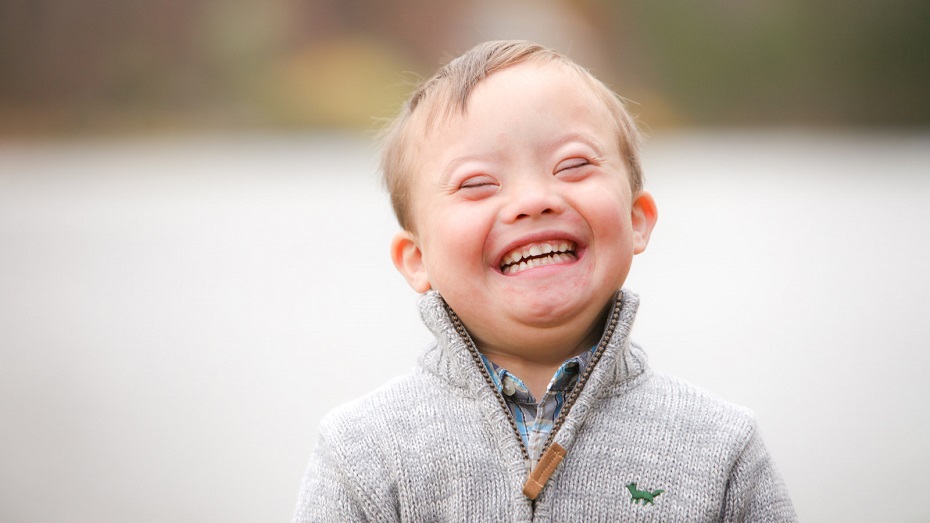In the mid-19th century, in 1866, the first description of the typical clinical characteristics of Down syndrome was made. The author of this study, British physician John Langdon Haydon Down, named this genetic variation, although at that time he could not determine the cause behind it. Almost a century later, in 1958, the French geneticist Jérme Lejeune established that the so-called Down syndrome consisted of a chromosome alteration of the pair 21.
A genetic alteration that requires working with the newborn Down from the very beginning to stimulate its sensory and engine apparatus and provide all the necessary emotional support. Full information on Down syndrome, its causes, symptoms, and treatments is essential to meet the baby’s needs from the first moment.
What Is Down Syndrome?
Down syndrome, also known as trisomy 21, is one of the best-known and most common chromosomal abnormalities, affecting one in 800 or 1,000 newborns. A genetic alteration that has as its main characteristic the presence of an extra chromosome, that is, if human cells usually have 46 chromosomes in 23 pairs, in the case of Down syndrome they have three chromosomes in the par 21 instead of two.
Down syndrome causes intellectual disability by affecting brain development, in addition to adding other conditions such as heart disease and/or digestive diseases. People with trisomy 21 have distinctive features such as mild microcephaly with occipital brachycephaly, short neck, almond eyes, nose, mouth, small ears and hands, low height, and little muscle tone.
Causes
Although a specific cause is not known, different origins can be pointed to the genetic alteration that occurs during pregnancy and that arises when the 21 chromosome is replicated. A replica that can originate from three causes:
- Trisomy 21: a genetic error that occurs right at the time of cell reproduction, being the most common type of Down syndrome.
- Chromosomal translocation: an uncommon case that also takes place throughout the cell division process. The anomaly not only takes place on par 21 but the 14th couple is affected by a genetic error.
- Mosaicism or mosaic trisomies: There is a combination of chromosomal types, three chromosomes, and two chromosomes.
Added to these typical causes are several risk factors that increase the chances of such chromosomal anomalies. These risk factors include:
- A late-age pregnancy. According to specialists, if the mother is over 35 years of age, the chances of a child with Down syndrome are increased. Thus, the greater the mother, the greater the risk that the chromosomal division will be anomalous.
- Have a child with Down syndrome already.
- Be the parents who carry genetic translocation for Down syndrome.
Down syndrome is not hereditary and only a small percentage of people with Down syndrome are carriers of genetic translocation.
Symptoms
As we have already pointed out, people with Down syndrome have characteristic physical traits, a degree of disability greater or lesser depending on each case, and some associated health problems that may be congenital or typical of age. Thus, the usual health complications in people with Down syndrome include obesity, sleep apnea, congenital heart defects, immune system disorders, spine problems, hearing and vision problems, gastrointestinal diseases, childhood leukemia, and Alzheimer’s.
Treatments
Since it is not a disease, Down syndrome does not have medical treatment, but it can be diagnosed both before and after birth, in addition to providing early care for all the health complications that can arise throughout the lives of the people affected.
Diagnoses can be:
Prenatal diagnosis has a more reliable test amniocentesis, a confirmation test that is usually performed on mothers without a history of genetic alterations or present a risk that the fetus may present an alteration.
Diagnosis after birth is carried out with a clinical examination and an analysis and the number, size, and shape of the chromosomes.
As far as treatment is concerned, Down syndrome requires care from the first moment of the baby’s life to optimize his quality of life. Stimulation and cognitive care programs are basic to improve the intellectual and physical skills of people with Down syndrome. A treatment aimed at making them as autonomous as possible and able to develop their capacities.
To this end, it is essential to seek guidance and professional help both for stimulation and early learning during childhood and adolescence, as well as specific medical care already in adulthood. The life expectancy of people with Down syndrome has improved considerably, reaching over 60 today.

